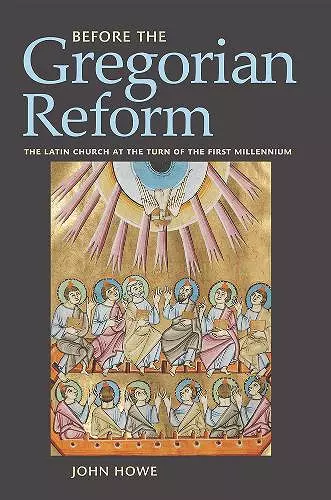Before the Gregorian Reform
The Latin Church at the Turn of the First Millennium
Format:Paperback
Publisher:Cornell University Press
Published:15th Jan '19
Should be back in stock very soon

Historians typically single out the hundred-year period from about 1050 to 1150 as the pivotal moment in the history of the Latin Church, for it was then that the Gregorian Reform movement established the ecclesiastical structure that would ensure Rome's dominance throughout the Middle Ages and beyond. In Before the Gregorian Reform John Howe challenges this familiar narrative by examining earlier, "pre-Gregorian" reform efforts within the Church. He finds that they were more extensive and widespread than previously thought and that they actually established a foundation for the subsequent Gregorian Reform movement.
The low point in the history of Christendom came in the late ninth and early tenth centuries—a period when much of Europe was overwhelmed by barbarian raids and widespread civil disorder, which left the Church in a state of disarray. As Howe shows, however, the destruction gave rise to creativity. Aristocrats and churchmen rebuilt churches and constructed new ones, competing against each other so that church building, like castle building, acquired its own momentum. Patrons strove to improve ecclesiastical furnishings, liturgy, and spirituality. Schools were constructed to staff the new churches. Moreover, Howe shows that these reform efforts paralleled broader economic, social, and cultural trends in Western Europe including the revival of long-distance trade, the rise of technology, and the emergence of feudal lordship. The result was that by the mid-eleventh century a wealthy, unified, better-organized, better-educated, more spiritually sensitive Latin Church was assuming a leading place in the broader Christian world.
Before the Gregorian Reform challenges us to rethink the history of the Church and its place in the broader narrative of European history. Compellingly written and generously illustrated, it is a book for all medievalists as well as general readers interested in the Middle Ages and Church history.
A comprehensive and accessible survey of two hundred years of church history.... A richly textured and arresting image of a world rooted in its Carolingian past yet foundational to the expansionist and ecumenical church of the later Middle Ages.... Indispensible to any medieval history syllabus.
* H-Soz-Kult *Builds on a good deal of recent research which emphasises the deep roots of later developments, and draws attention to the diversity and vitality of religious life at this time.... He succeeds in evoking interest in the tenth-century Church.
* English Historical Review *There is much of use here: the stress on the physical, acoustic and aesthetic aspects of developments in the tenth and early eleventh centuries is welcome, and these sections bring together a wide range of recent literature. Mediterranean areas, especially Italy, receive due attention... the emphasis on Byzantine ideas is refreshing.
* Journal of Ecclesiastical History *An extensively researched, engagingly written, and nicely illustrated book.... Howe draws upon his own impressive research to demonstrate the numerous contacts between the Roman and Greek churches.
* American Historical Review *Howe calls upon a truly impressive array of evidence and scholarship from the fields of history, literature, liturgical studies, art and architectural history, and theological studies in support of his argument, and scholars will profit immensely from perusing his footnotes. The book is loaded with important insights and asides.... Most importantly, Howe's work lands another hammer blow on the older, confessionally-driven, top-down paradigm of church reform... and does so in a style that is self-consciously accessible to specialist and non-specialist readers.
* SPECUL- Winner of Helen and Howard R. Marraro Prize (AHA) 2018 (United States)
ISBN: 9781501732683
Dimensions: 229mm x 152mm x 24mm
Weight: 907g
372 pages